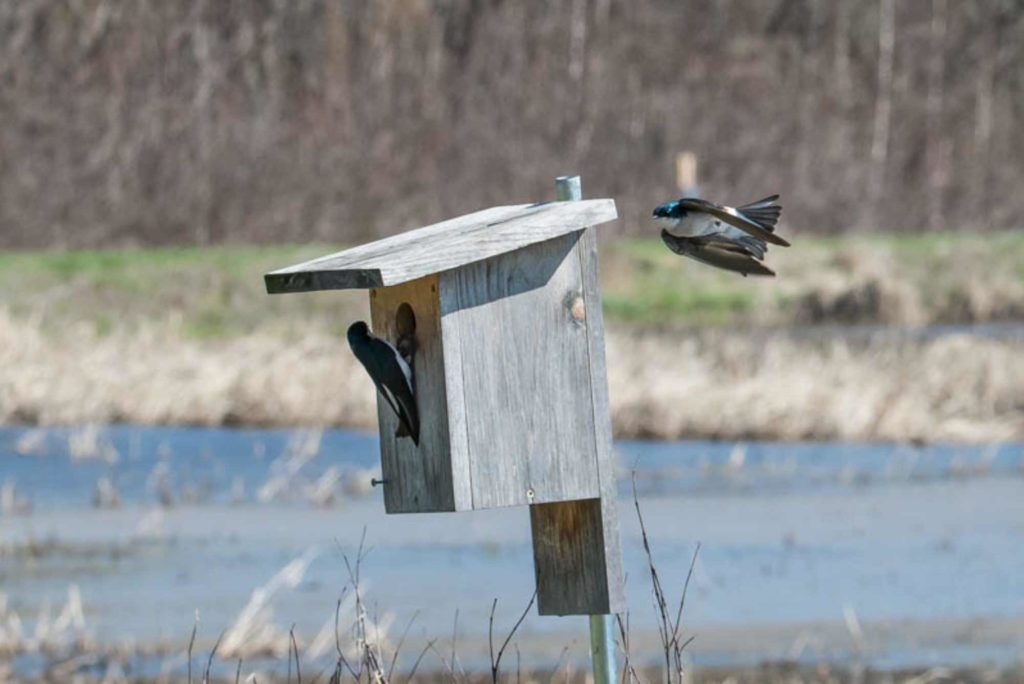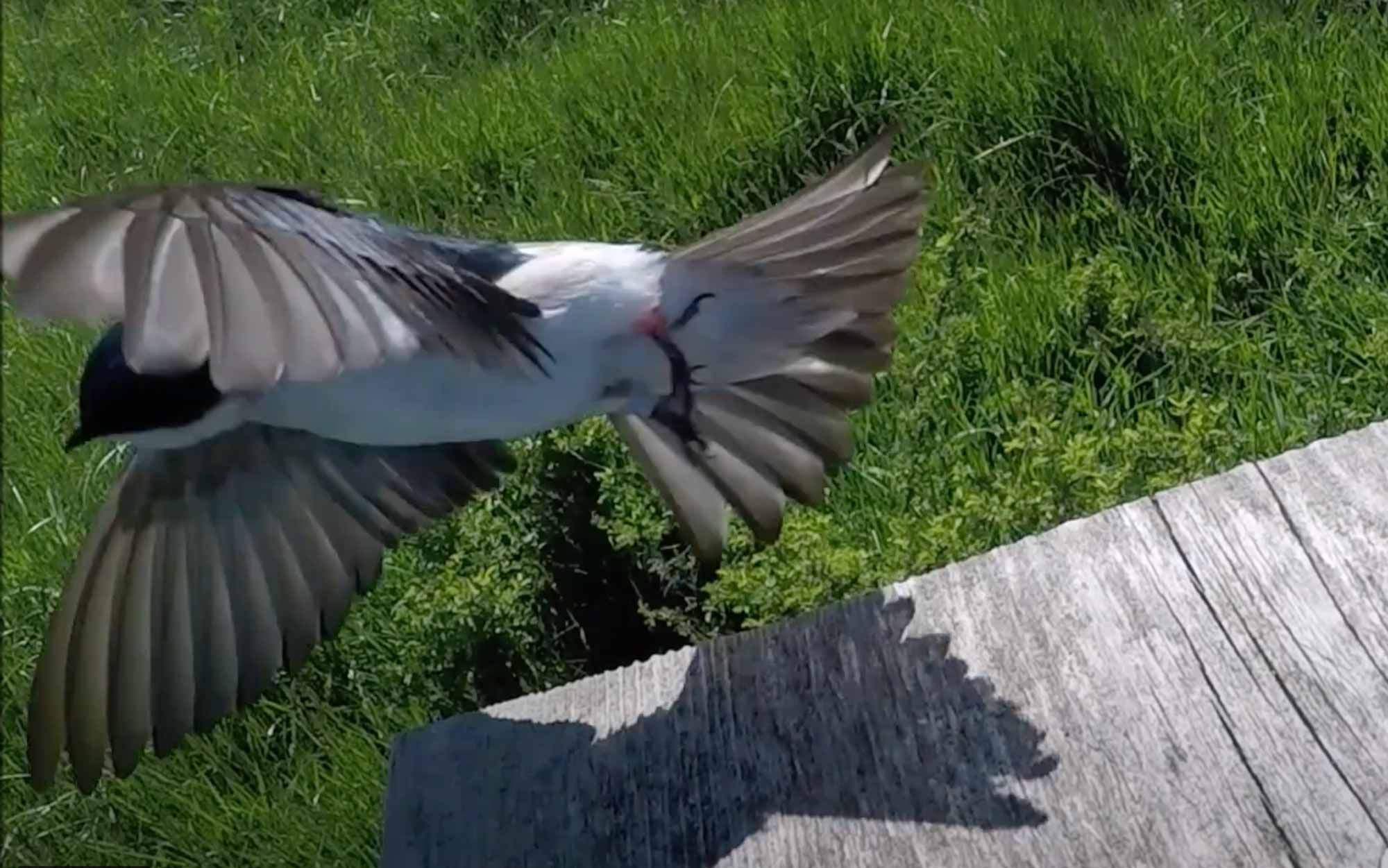Materials Checklist
• Printed worksheets (optional)• Pen or pencil
Exploring behavior through the eyes of a bird
Let’s learn to observe, wonder about, and measure behavior like a real-life behavioral biologist.
We’ll do this using videos of a bird that spends every spring right here in Bloomington – the fabulous tree swallow! Join us in learning about their lives, their babies, and other fascinating behavior that tree swallows perform every day.
Using Context Clues to Learn About Tree Swallows

Using clues in the text and picture above, choose the best answer(s) inside each parenthesis:
Tree swallows are songbirds that have (blue or black) back feathers with a (white or black) belly and chest. Each spring, they fly all the way from areas in the south like (Mexico or Canada) to raise chicks here in Indiana. Once they arrive, tree swallows look for areas near (open marshland or dense woods) and (wet or dry) areas. These masterful pilots prefer this habitat because they (fly or run) wildly through the air to catch (mosquitos or worms), which they eat and feed to their babies. Female tree swallows lay eggs in a nest that they build inside a (dirt or wooden) cavity structures like (pick 2: tree holes or underground burrows or manmade nestboxes or dense leafy bushes). They can’t build their own cavities – this means they have to fight to defend these preexisting nesting territories from other birds so that they get a chance to breed!
Careful observation of behavior is the first step in scientific discovery
When you’re interested in studying animal behavior, careful observation is the first step. Let’s watch some real life tree swallows – close up – using a GoPro camera we placed on the roof of the nestbox. We see a pair of tree swallows on and around the nestbox, and the entrance to the cavity is just below, out of our view. This recording was made early in the spring, shortly after the male and female claimed their nestbox. In a few weeks, they’ll begin laying eggs and raising young.
What type of behaviors do you see? Name 3 behaviors and describe and/or draw them.
Inspiring Questions about the Function of a Behavior
Many behaviors may have a function. If the behavior helps the animal survive or raise more babies, then the behavior is ‘adaptive’. Scientists study whether certain behaviors are adaptive by comparing animals that differ in a behavior. Scientists also observe who does the behavior and when they do it. Do those who do the behavior more often or more intensely have more babies? Do they live longer lives?
Think about the following behaviors and brainstorm why they could be adaptive. Use this same video of tree swallows on their nestbox for inspiration.
A. Vocalizations: You may have noticed that some tree swallows made noises near the nestbox. What did these sound like? Can you pinpoint more than one type of vocalization? Can you think of any reasons, related to survival or reproduction, these birds might be vocalizing? Use clues about who was vocalizing and what else was happening to think about the function of different vocalizations.
B. Aggression: Towards the end of the video (2:43+), did you notice the brownish tree swallow hovering in front of the box, or even sitting on the nest box for just a moment? This is a young female. Can you think of a reason why there might be a female intruder scoping out the box? Why would the tree swallows who claimed the nest chase away the intruder? What would happen if they didn’t chase her away?
C. Are you curious about any other behaviors you observed?


